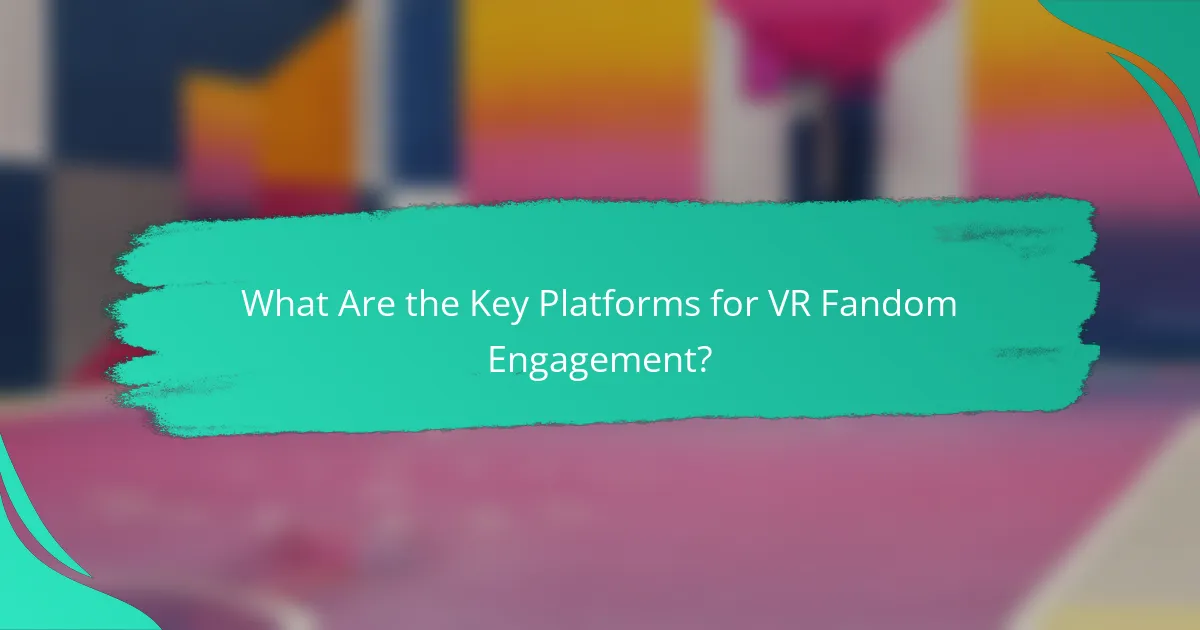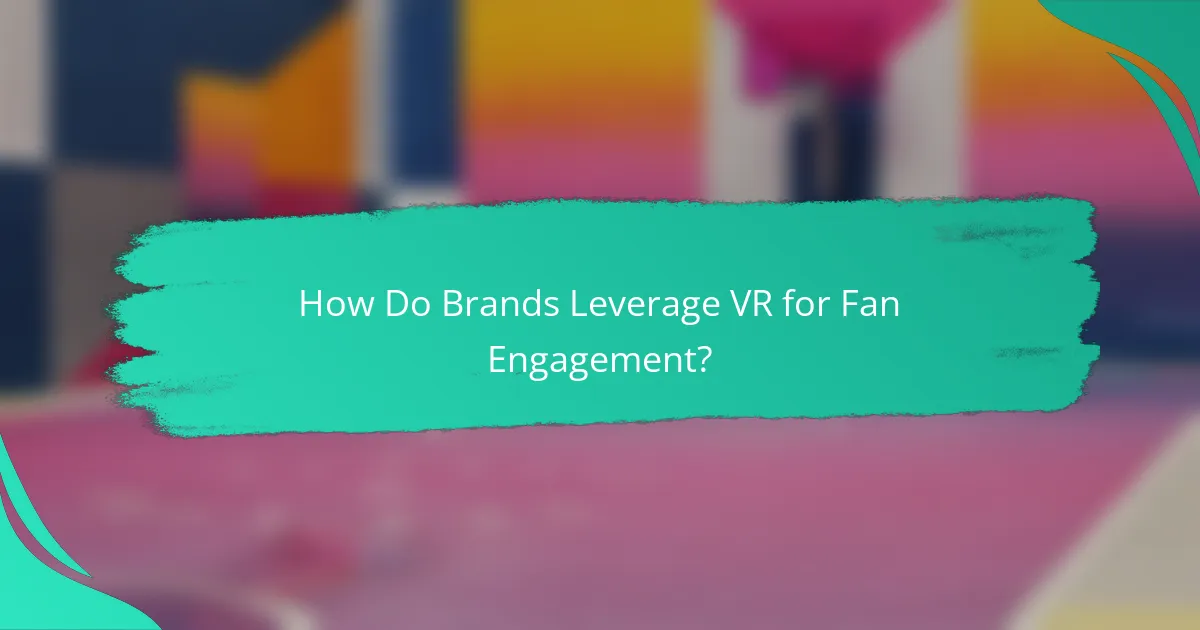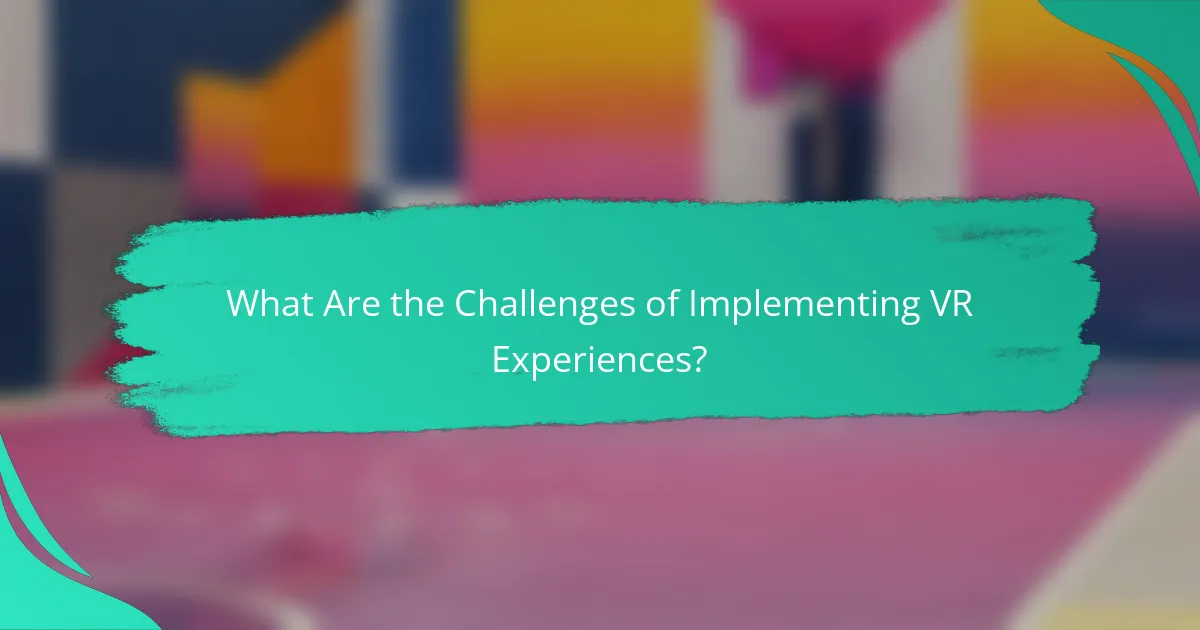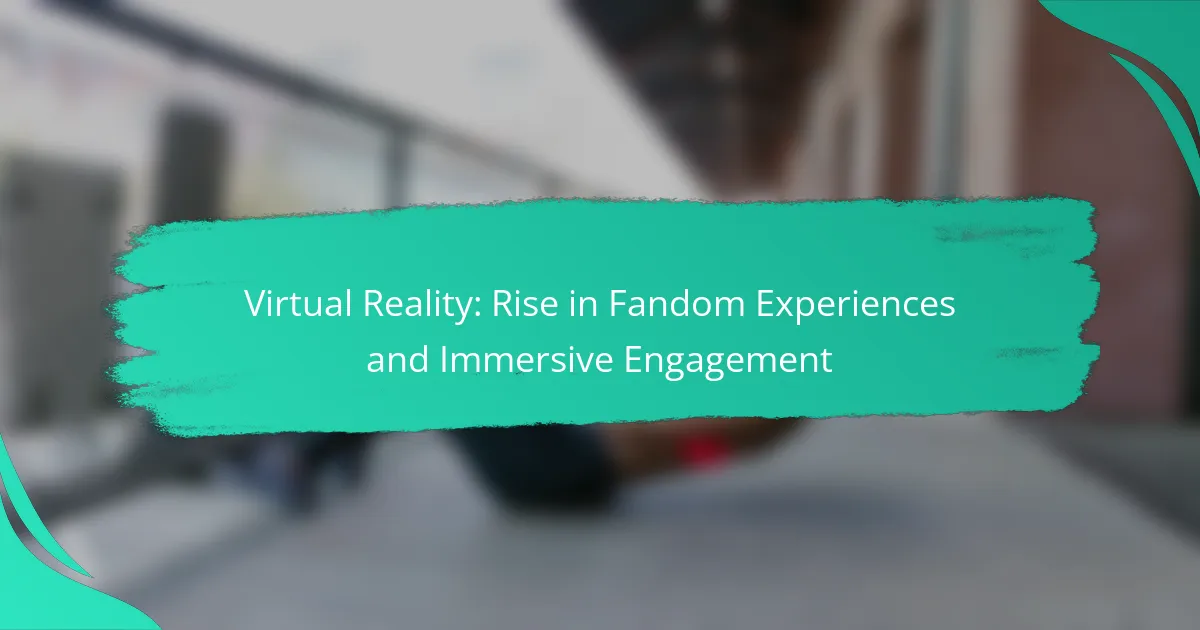Virtual reality (VR) is revolutionizing fandom experiences by immersing fans in interactive environments that bring their favorite franchises to life. By transforming passive consumption into active participation, VR fosters deeper connections among fans and enhances emotional engagement with brands. Key platforms like Oculus Quest 2 and PlayStation VR offer unique features that cater to diverse audiences, making them vital for immersive fan interactions.

How Is Virtual Reality Enhancing Fandom Experiences?
Virtual reality (VR) is significantly enhancing fandom experiences by creating immersive environments that allow fans to engage with their favorite franchises in unprecedented ways. Through interactive elements and social connectivity, VR transforms passive consumption into active participation, fostering deeper connections among fans.
Immersive gaming environments
Immersive gaming environments in VR allow fans to step directly into the worlds of their favorite games, movies, or shows. These environments often feature detailed graphics and soundscapes that replicate the original settings, enabling users to explore and interact with their surroundings. Popular titles like “Beat Saber” and “Half-Life: Alyx” exemplify how VR can create engaging experiences that captivate players.
When participating in these environments, fans can enjoy multiplayer modes, enhancing social interaction. This can lead to shared experiences, such as completing quests together or competing in challenges, which strengthens community bonds.
Virtual meet-and-greets
Virtual meet-and-greets provide fans with the opportunity to interact with their favorite celebrities or creators in a VR setting. These events often feature live Q&A sessions, personalized interactions, and exclusive content that fans can access from the comfort of their homes. Platforms like VRChat and AltspaceVR are popular venues for these experiences.
To maximize enjoyment, fans should prepare questions in advance and familiarize themselves with the platform’s features. This ensures a smoother interaction and enhances the overall experience.
Fan-driven content creation
Fan-driven content creation in VR allows enthusiasts to produce their own experiences, such as fan films, mods, or virtual art galleries. Tools like Unity and Unreal Engine empower creators to build immersive worlds that reflect their interpretations of beloved franchises. This democratization of content creation fosters innovation and diversity within fandoms.
Engaging in fan-driven projects can be rewarding but requires a commitment to learning new skills. Fans should consider collaborating with others to share knowledge and resources, which can lead to higher-quality outputs.
Interactive storytelling
Interactive storytelling in VR enables fans to influence narratives in real-time, creating a personalized experience. By making choices that affect the storyline, users can explore different outcomes and character arcs, enhancing emotional investment. Games like “The Walking Dead: Saints & Sinners” illustrate how this format can deepen engagement.
To fully enjoy interactive storytelling, fans should embrace the experimental nature of these experiences. Trying multiple paths can lead to richer narratives and a greater understanding of the story’s themes.
Community engagement platforms
Community engagement platforms in VR, such as Rec Room and VRChat, facilitate social interactions among fans. These platforms allow users to create and join themed rooms, participate in events, and share experiences with others who share similar interests. This fosters a sense of belonging and community among fans.
To enhance community engagement, fans should actively participate in discussions and events, as this can lead to new friendships and collaborative opportunities. Being open to meeting new people can enrich the overall fandom experience.

What Are the Key Platforms for VR Fandom Engagement?
Key platforms for VR fandom engagement include Oculus Quest 2, PlayStation VR, SteamVR, and HTC Vive. Each platform offers unique features and experiences that cater to different audiences, making them essential for immersive fan interactions.
Oculus Quest 2
The Oculus Quest 2 is a standalone VR headset that provides an accessible entry point for users. With a wireless design and a library of games and experiences, it allows fans to engage in virtual environments without the need for a powerful PC.
Its intuitive interface and social features enable users to connect with friends and participate in multiplayer experiences. The headset’s affordability, typically priced around $300, makes it a popular choice among casual gamers and VR enthusiasts alike.
PlayStation VR
PlayStation VR is designed for use with PlayStation consoles, offering a wide range of exclusive titles and experiences. This platform is ideal for fans who already own a PlayStation 4 or PlayStation 5, as it integrates seamlessly with existing hardware.
While the headset may require additional accessories for optimal performance, its library includes popular franchises that enhance fandom engagement. Prices for the headset generally range from $200 to $400, depending on bundles and availability.
SteamVR
SteamVR is a platform that supports a variety of VR headsets, including HTC Vive and Oculus devices. It provides access to a vast library of VR content, making it a versatile choice for fans looking to explore different experiences.
Users can customize their setup with various hardware options, but this flexibility can lead to a more complex installation process. SteamVR is particularly favored by PC gamers who seek high-quality graphics and immersive gameplay.
HTC Vive
The HTC Vive is known for its high-fidelity visuals and room-scale tracking, making it a premium option for serious VR fans. This platform is often used in arcades and professional settings due to its advanced technology and immersive capabilities.
While the Vive typically comes at a higher price point, often exceeding $500, it offers a rich library of experiences that cater to dedicated gamers and enthusiasts. Users should consider their space and setup requirements, as the Vive requires a larger play area for optimal use.

How Do Brands Leverage VR for Fan Engagement?
Brands leverage virtual reality (VR) to enhance fan engagement by creating immersive experiences that deepen emotional connections. This approach allows fans to interact with their favorite brands in innovative ways, fostering loyalty and community.
Branded virtual events
Branded virtual events are immersive experiences where fans can participate in live interactions, such as concerts, product launches, or meet-and-greets. These events often utilize VR technology to create a sense of presence, making fans feel as though they are part of the action, regardless of their physical location.
For example, a music festival might offer a VR experience that allows fans to explore the venue, watch performances from different angles, and interact with other attendees. Brands should consider the technical requirements and user accessibility to ensure a smooth experience for all participants.
Exclusive VR content releases
Exclusive VR content releases provide fans with unique experiences that are not available through traditional media. This could include behind-the-scenes footage, interactive storytelling, or virtual tours of a brand’s facilities.
By offering exclusive content, brands can create a sense of urgency and excitement, encouraging fans to engage more deeply. For instance, a film studio might release a VR experience that allows fans to explore the movie’s universe, enhancing anticipation for the film’s premiere.
Partnerships with VR developers
Partnerships with VR developers enable brands to create high-quality, engaging experiences tailored to their audience. Collaborating with experts in VR technology ensures that the final product is not only visually appealing but also functional and user-friendly.
Brands should seek developers with a proven track record in creating immersive experiences. This collaboration can lead to innovative solutions that enhance fan engagement, such as gamified experiences or interactive brand storytelling. Establishing clear goals and expectations from the outset can help avoid common pitfalls in these partnerships.

What Are the Benefits of VR in Fandom?
Virtual reality (VR) enhances fandom experiences by providing immersive environments that engage fans on a deeper level. This technology allows users to interact with their favorite franchises in ways that traditional media cannot match, fostering a more profound connection and enjoyment.
Enhanced user experience
VR creates a unique and immersive user experience that transports fans directly into their favorite worlds. By simulating environments and scenarios, fans can explore, interact, and participate in ways that traditional formats like films or games cannot offer. For instance, a VR concert allows fans to feel as if they are on stage with their favorite artists.
Additionally, VR can personalize experiences based on user preferences, making interactions more engaging. Fans can choose their paths, explore hidden content, or interact with characters, enhancing their overall enjoyment and satisfaction.
Increased fan loyalty
By offering unique and memorable experiences, VR can significantly boost fan loyalty. When fans feel a strong emotional connection through immersive experiences, they are more likely to remain engaged and supportive of the brand or franchise. This loyalty can translate into long-term relationships and increased participation in future events or releases.
Moreover, VR experiences can foster community among fans, as they often share these moments with others. This sense of belonging can deepen their commitment to the fandom, encouraging them to advocate for the brand and participate in discussions or events.
New revenue streams
Implementing VR in fandom can open up new revenue opportunities for creators and brands. Virtual events, merchandise, and exclusive content can be monetized, providing fans with unique offerings they are willing to pay for. For example, fans might purchase tickets for a VR experience that allows them to interact with characters or explore a fictional universe.
Additionally, brands can explore partnerships with VR platforms to reach wider audiences. By creating engaging content that attracts both existing fans and newcomers, they can diversify their income sources and enhance their market presence.

What Are the Challenges of Implementing VR Experiences?
Implementing virtual reality (VR) experiences poses several challenges, including technical limitations, high costs, and user accessibility issues. These factors can hinder the effectiveness and reach of VR in fandom engagement.
Technical Limitations
Technical limitations in VR often stem from hardware capabilities and software compatibility. Many users may not have access to high-end VR headsets or powerful computers, which can restrict the audience. Additionally, developing immersive content requires significant technical expertise and resources.
Latency is another critical technical challenge; even low latency can disrupt the immersive experience. Developers should aim for latency under 20 milliseconds to ensure smooth interactions, but achieving this can be complex and costly.
High Costs
The costs associated with VR development can be substantial, encompassing hardware, software, and content creation. High-quality VR headsets can range from several hundred to over a thousand USD, and creating engaging content often requires skilled professionals and extensive testing.
Organizations should weigh the potential return on investment against these costs. Exploring partnerships or sponsorships can help mitigate financial burdens while expanding reach and engagement.
User Accessibility Issues
User accessibility in VR is a significant concern, as not all individuals can easily use VR technology. Factors such as motion sickness, physical disabilities, and age-related limitations can affect user experience. Developers should consider these aspects when designing VR experiences to ensure inclusivity.
Offering alternative modes of interaction, such as non-VR options or adjustable settings for comfort, can enhance accessibility. Providing clear instructions and support can also help users navigate VR environments more effectively.
